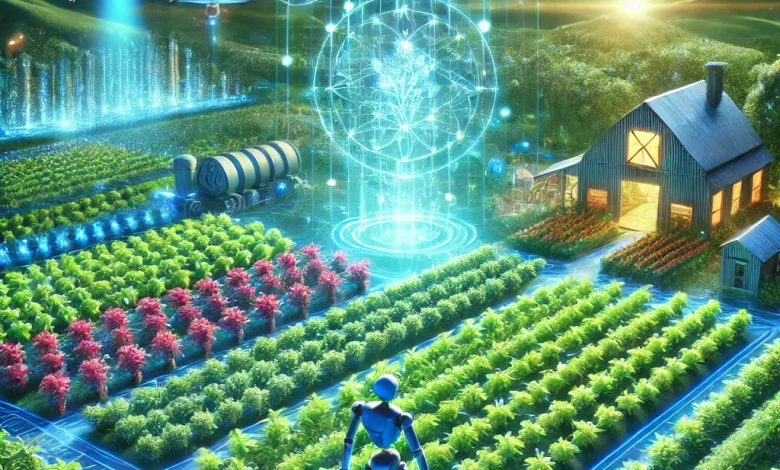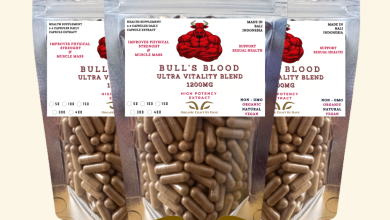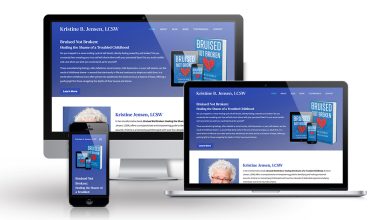d.farm: Revolutionizing Crop Management with Digital Farming Tools

In the ever-evolving world of agriculture, traditional methods alone are no longer enough to meet the growing demands for food production and sustainability. With climate change, soil degradation, water scarcity, and a rising global population, the pressure on farmers has never been higher. This is where d.Farm—a cutting-edge digital farming platform—comes into play, offering innovative tools that help farmers tackle these complex challenges with precision, efficiency, and sustainability.
In this blog, we explore how d.farm is revolutionizing crop management by integrating data analytics, precision agriculture, and IoT technology to create smarter, more resilient farming practices. Whether for large-scale farms or smaller family operations, d.farm is helping farmers optimize every aspect of their operations.
What is d.farm?
At its core, d.farm is a comprehensive digital farming platform designed to help farmers collect and analyze real-time data to enhance decision-making and improve crop management. By leveraging IoT sensors, satellite imagery, drones, and data analytics, d.farm enables farmers to monitor key factors such as soil health, irrigation levels, pest outbreaks, and crop performance—all in one centralized dashboard.
The platform helps farmers make smarter, data-driven decisions that lead to increased productivity and sustainability. Through real-time monitoring and predictive analytics, d.farm allows farmers to optimize their farm management practices with greater precision than ever before.
Key Features of d.farm in Crop Management
Here are some of the primary tools and features that make d.farm a game-changer for crop management:
- Real-Time Monitoring through IoT Sensors:
d.farm uses Internet of Things (IoT) sensors installed in fields to monitor real-time data such as soil moisture, temperature, pH levels, and nutrient content. By receiving accurate information directly from the soil, farmers can determine the best times for irrigation and fertilization. This helps avoid overwatering or under-watering, reducing resource waste while keeping crops healthy.
With d.farm, these sensors provide a detailed analysis of soil conditions, giving farmers the insights they need to optimize their field management and improve crop growth.
- Satellite and Drone Imagery:
The satellite imaging integrated into the platform enables farmers to monitor entire fields from a bird’s-eye view, providing them with a comprehensive picture of field conditions. By detecting potential issues like pest damage, nutrient deficiencies, and drought stress, farmers can respond quickly to mitigate risks.
In addition to satellites, drones provide more granular data. They fly over farms, capturing high-resolution images of crop health. These images are processed using computer vision algorithms, which flag any areas that require attention. This targeted approach reduces the need for manual checks and increases farming efficiency.
- Predictive Analytics:
By combining historical data, real-time field data, and weather forecasts, d.farm offers predictive analytics that help forecast future conditions. With the ability to anticipate threats like sudden weather changes, pest outbreaks, or optimal harvest times, farmers can plan proactively.
Predictive modeling helps reduce risks and uncertainty, leading to fewer surprises during the growing season. For example, d.farm’s machine learning algorithms can predict crop yields based on variables such as soil moisture levels and weather patterns, allowing farmers to plan their production and harvest schedules more accurately.
- Precision Irrigation:
Water scarcity is a pressing concern in many agricultural regions. Over-irrigation not only wastes water but also negatively impacts crop health and increases costs. With d.farm, precision irrigation techniques are used to apply water only when and where it’s needed, ensuring optimal water usage while maximizing crop health.
d.farm’s sensors continually monitor moisture levels in the soil, and the platform integrates weather predictions to adjust irrigation schedules accordingly. By preventing water wastage, this approach also reduces costs and ensures that crops receive the right amount of water to thrive.
- Nutrient and Fertilizer Management:
Over-fertilization is not only costly for farmers, but it also harms the environment by leading to soil nutrient depletion and water contamination. d.farm tackles this problem by using data to optimize fertilizer application, ensuring that the right amount of nutrients is delivered exactly where they are needed.
By analyzing soil nutrient levels and crop requirements, d.farm recommends fertilizer amounts tailored to specific crop needs, helping farmers improve efficiency and protect natural resources. With precise applications of fertilizers, crops grow better, and excess chemicals are avoided, promoting healthier soil and reducing pollution.
- Pest and Disease Management:
Pest and disease management can be one of the most unpredictable and costly aspects of farming. However, with the help of d.farm’s real-time monitoring, farmers can detect early signs of pest activity or disease outbreaks.
Using data from satellite and drone images, along with ground sensors, d.farm’s artificial intelligence (AI) algorithms can spot anomalies in plant health or pest presence, helping farmers quickly identify and address the problem. By acting at the first signs of an issue, they can reduce the need for broad pesticide use, thereby minimizing chemical input and the potential damage to crops.
- Supply Chain Integration:
Modern farming extends far beyond the boundaries of the farm itself. Successful crop management also involves efficient logistics to get crops from the farm to the market. d.farm integrates with supply chain tools to help farmers optimize their distribution strategies.
This integration ensures that crops are harvested at the right time and sent to the market as quickly as possible, minimizing spoilage, lowering transportation costs, and ultimately maximizing profits.
The Environmental Benefits of d.farm
One of the core values of d.farm is its focus on creating sustainable farming practices. Technology not only makes farming smarter, but also more eco-friendly. Here’s how:
- Efficient Resource Use: d.farm’s precision irrigation, soil health management, and nutrient optimization ensure that resources such as water, energy, and fertilizers are used efficiently—helping farmers reduce waste and conserve precious resources.
- Reduced Chemical Inputs: By analyzing crop needs and environmental conditions, d.farm minimizes pesticide and fertilizer use. This not only reduces costs for farmers but also helps limit the environmental harm caused by overuse of chemicals, such as water contamination and soil degradation.
- Support for Biodiversity: d.farm encourages crop diversity by tracking field conditions and recommending rotations that can protect ecosystems. Supporting biodiversity through managed, sustainable farming reduces dependency on harmful practices like monoculture farming and ensures that ecosystems remain healthy.
How d.farm Supports the Farmer Community
In addition to being a powerful tool for individual crop management, d.farm fosters a sense of community among farmers. It offers access to a network of experts, peer-driven knowledge, and ongoing learning resources. Whether through digital forums, educational content, or collaborative tools, d.farm helps farmers exchange ideas and find solutions to their specific challenges.
Farmers, especially those in smaller operations, can benefit from this shared knowledge, leveraging best practices developed by others. This community support ensures that no farmer is left behind in the digital farming revolution.
Conclusion: The Future of Agriculture with d.farm
As we face greater challenges in agriculture, such as rising food demands and environmental sustainability, platforms like d.farm are crucial to transforming the way farming is done. By integrating data-driven decision-making, precision farming techniques, and environmentally sustainable practices, d.farm offers farmers the tools they need to adapt to changing circumstances and boost productivity without compromising the environment.
Looking ahead, d.Farm will likely continue to push the boundaries of agricultural technology, incorporating advances like artificial intelligence, robotics, and blockchain for even greater levels of precision, automation, and traceability. By making farming smarter and more connected, d.farm is helping pave the way for a more sustainable and resilient agricultural future—one where farmers are equipped to meet the demands of tomorrow’s food systems today.









